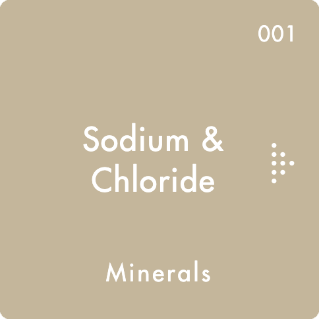
Health Functions
Sodium plays a role in absorbing chloride, amino acids, glucose, and water, while chloride aids the digestion and absorption of many nutrients. Read More

Sodium (Na) is a metallic element soluble in water, where it is mostly counterbalanced by chloride (Cl) to form sodium chloride (NaCl), or common table salt.
Sodium chloride is essential for life, with tight regulation of the body's sodium ion (Na+) and chloride ion (Cl─) concentrations outside of cells (including blood plasma).
Although a minimal amount of salt is required for survival, the health implications of excess salt intake represent an area of intensive research (1, 2).
Authored by Dr Peter Engel in 2010, reviewed and revised by Dr. Volker Elste on 20.09.2017.
Things to know about Sodium & Chloride
There are many factors affecting the onset and progress of osteoporosis and nutrition is one of them. Excretion of calcium in urine has been found to increase with greater salt (NaCl) consumption (11). Read More
The recommended dietary allowance (RDA) of sodium and chloride is dependent on age, gender, and other factors. Read More
The habitual intake of sodium for populations across Europe is high and exceeds the amounts required for normal function. Read More
Sodium (and chloride) deficiency does not generally result from inadequate dietary intake, even in those on very low-salt diets. Read More